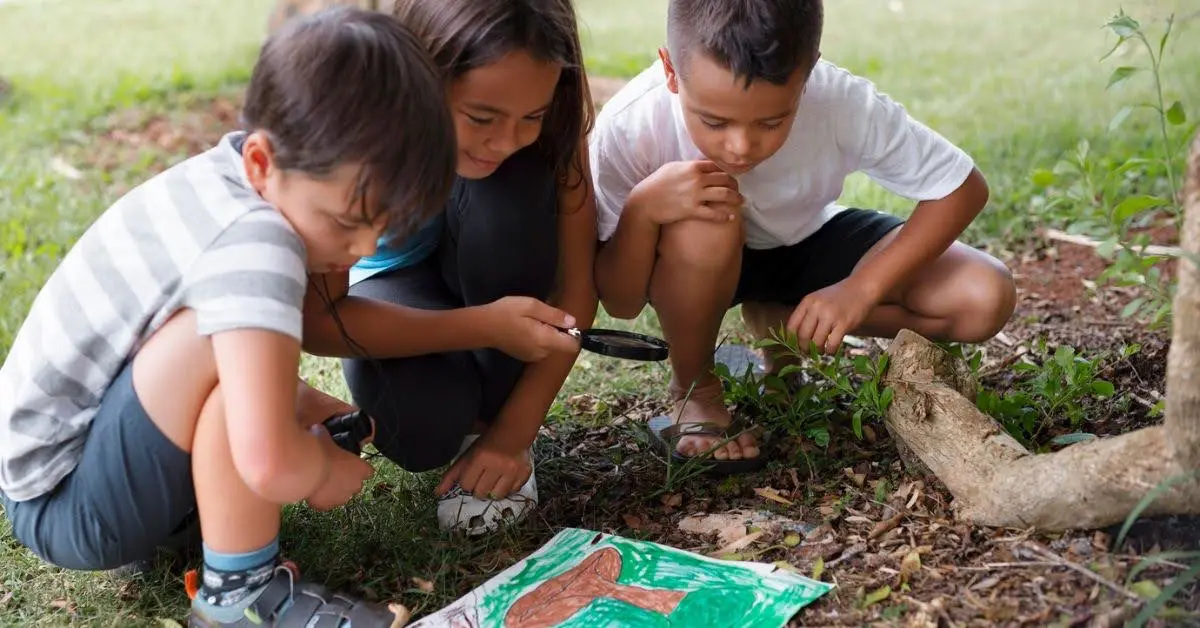With escalating environmental crises from climate change to biodiversity loss and pollution, the role of education in building environmental awareness has never been more crucial. Integrating environmental education into the school curriculum equips students with the knowledge, skills, and values necessary to act responsibly and sustainably. Schools are pivotal in shaping the next generation’s attitudes and behaviors toward the environment.
Incorporating environmental education into the curriculum helps students understand the interconnectedness of natural systems and the impact of human activities on these systems. It creates a sense of responsibility and urgency to address environmental challenges. It also prepares students to become informed and engaged citizens who can contribute to sustainable solutions in their personal and professional lives.
By making environmental awareness a core part of learning, schools can inspire students to become stewards of the planet, capable of driving positive change.
Is It Important to Make Students Aware of The Importance of Protecting The Environment?
In today’s rapidly changing world, environmental awareness for students is highly important. Human activities continue to impact the planet through climate change, pollution, and plastic waste.
Schools have a vital role in shaping how young people think about these challenges and equipping them with the environmental knowledge and environmental concepts they need to care for the Earth responsibly.
Raising awareness helps prepare students to contribute to environmental sustainability and to live with a sense of environmental responsibility.
Below are three reasons why it matters and some environmental awareness examples that can be applied in schools.
Also Read: School Life Hacks: 7 Effective Self-Management Skills for Students
1. Building a Foundation for Lifelong Responsibility
Teaching children about the environment from an early age helps create habits that last a lifetime.
When children understand that their actions, such as saving energy, practicing waste management practices, or reducing plastic waste, directly affect the planet, they begin to see themselves as caretakers of creation.
Through this process, children learn essential environmental concepts like biodiversity and conservation.
This foundation not only improves their behavior at school but also shapes them as lifelong learners who carry sustainable practices into adulthood.
2. Empowering Students to Address Global Challenges
Practical activities are one of the best ways to raise environmental awareness.
At school, teachers can integrate an awareness activity on environmental issues into lessons, such as community clean-ups, recycling programs, or campaigns that reduce single-use plastics.
These projects teach students how to promote environmental awareness as a student while building critical thinking and teamwork skills.
Students discover that their voices and actions matter. Through participation in environmental management projects or service learning opportunities, they see that collective efforts create real change.
This inspires them to take part in solving global challenges like climate change, deforestation, and pollution.
At home, parents can encourage children to practice waste segregation, create a mini garden together, or choose eco-friendly products for daily use.
These simple activities not only strengthen family bonds but also instill sustainable habits that contribute to addressing global environmental challenges.
3. Fostering a Sense of Connection to Nature
Environmental awareness for students is not only about knowledge but also about building a connection with nature.
Many young people spend much of their time indoors, so schools can create opportunities for them to explore the outdoors through field trips, gardening, or hands-on science projects.
When students see the beauty of nature, they develop appreciation and empathy for living things. This connection deepens their commitment to protecting the environment and strengthens their environmental responsibility.
They begin to understand that their well-being is linked to the health of the planet and are more motivated to support environmental sustainability for future generations.
What is Meant by Environmental Awareness for Students?
Environmental awareness for students refers to the understanding and knowledge they gain about environmental issues, the impact of human activities on the planet, and the importance of sustainable practices.
It involves educating students about the interconnectedness of ecosystems, the challenges facing the environment, and the role individuals and communities can play in protecting and preserving natural resources.
By cultivating environmental awareness, educators aim to empower students with the skills and motivation to make informed decisions that contribute to the well-being of the planet.
The effect of environmental awareness on students is profound, as it shapes their attitudes and behaviors toward the environment. When students are aware of the consequences of their actions, they are more likely to adopt sustainable practices and advocate for environmental protection.
Environmental awareness and education equip students with the tools to think critically about complex environmental issues and devise innovative solutions.
As students become more aware of their impact on the environment, they are inspired to take action, whether by reducing their carbon footprint, supporting conservation efforts, or educating others about the importance of sustainability.
This awareness is essential for creating a generation of environmentally conscious individuals who are committed to ensuring a healthy and sustainable future for all.
Also Read: Parenting Education: Parents as Lifelong Learners
So, How Can Schools Incorporate Environmental Awareness for Students in Their Classrooms?
Schools play an important role in raising environmental awareness for students. By integrating environmental awareness into daily learning, schools equip students with the environmental knowledge, concepts, and practical skills they need to face today’s environmental challenges.
In addition, through practical nature-based exploration and activities, students will be prepared to adopt sustainable practices and contribute to a sustainable future.
Here are eight effective ways schools can integrate environmental awareness examples into their programs:
1. Student Eco-Clubs and Outdoor Activities
Eco-clubs provide opportunities for school students to join environmental projects such as tree planting, recycling initiatives, and clean-up campaigns.
These activities encourage students connect with nature, practice waste management, and understand conservation efforts.
Outdoor learning like nature walks or biodiversity studies deepens their appreciation for preserving natural resources and builds a sense of environmental responsibility.
2. Field Trips and Outdoor Learning
Field trips to natural reserves, botanical gardens, or environmental centers strengthen environmental education by allowing elementary students and older learners to observe ecosystems directly.
For example, many schools make field trips a core part of the curriculum, ensuring that students understand how environmental concepts apply in real life.
Outdoor learning in school gardens also teaches young learners about plant growth, soil health, and energy conservation.
3. Using Digital Media to Spread Awareness
Schools can use social media, documentaries, and virtual tours to highlight environmental issues and solutions.
Digital storytelling engages students in promoting environmental awareness while building public awareness.
Online campaigns can inspire active involvement in combating climate change and encourage students to adopt eco friendly practices.
4. Learning Programs with Real-World Solutions
Environmental programs that focus on solving real-world problems help students develop critical thinking and innovation.
Many schools now offer specialized programs that encourage projects in renewable energy, waste management practices, and sustainable development goals.
Students work on circular economy strategies, study environmental science, and apply qualitative research methods.
This hands-on approach equips students to address global challenges such as plastic waste, solid waste management, and carbon emissions.
Also Read: 3 Simple Ways to Set Healthy Social Media Boundaries for Your Child
5. Classroom Projects and Simple Initiatives
Teachers can encourage students through classroom projects such as waste reduction, recycling initiatives, or creating art from plastic waste.
These environmental awareness examples give students practical skills in responsible consumption and waste management.
Projects can also be tied to character education, teaching respect for creation and responsibility toward future generations.
6. Collaborations with Environmental Organizations
Partnering with local communities and organizations enhances environmental education. Schools can involve students in community participation through clean-ups, awareness campaigns, and environmental conservation projects.
These collaborations allow active participants to see the environmental impact of their actions and reinforce the importance of collective efforts in environmental protection.
7. Seminars and Guest Speakers
Inviting experts in environmental science, environmental studies, or environmental chemistry letters provides students with deeper environmental knowledge.
Speakers on climate change, renewable energy sources, and sustainable development broaden understanding of environmental topics and inspire students to take part in promoting sustainable practices.
8. Parental Involvement in Environmental Education
To maximize the impact of environmental programs, schools involve parents in environmental activities.
Families can join community participation events like tree planting, start school gardens at home, or use energy efficient appliances to reduce their carbon footprint.
Parents help reinforce sustainable habits such as reducing plastic waste, recycling, and promoting sustainability in their daily lives.
Incorporating environmental awareness into the school curriculum is vital for preparing students to address the pressing environmental challenges of our time.
Schools can achieve this through eco-clubs, outdoor learning, digital media, and solution-oriented programs.
However, the success of these initiatives depends significantly on the active involvement of parents.
By partnering with schools, supporting eco-friendly programs, promoting sustainable practices at home, educating themselves, and encouraging community involvement, parents can help cultivate a generation of environmentally conscious and responsible individuals.
Together, schools and parents can create a powerful synergy that fosters a culture of sustainability and environmental stewardship among students.
Visit our website today to learn more about how International Curriculum such as our IB School Program integrates environmental awareness into its programs and fosters a sustainable future for its students.









